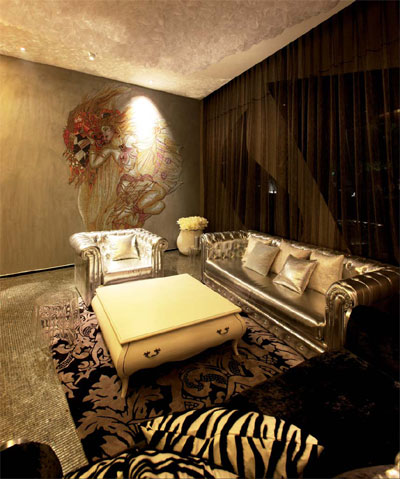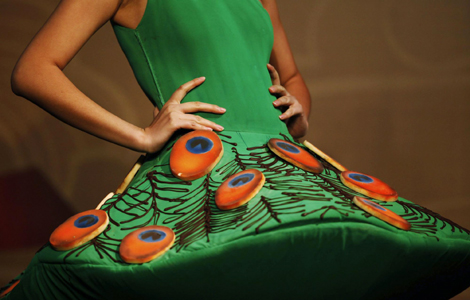Patterns in art
Updated: 2011-12-16 07:42
By Meng Jing (China Daily)
|
|||||||||
|
Mosaic artwork products displayed at the creative center of Victory Glass Building Material Co in Foshan. The company plans to introduce its high-end mosaic art brand JNJ globally next year. [Provided to China Daily] |
Mosaic makers in foshan look to develop design edge to stay ahead in global markets
Much like the ceramic tile industry, mosaic makers in Foshan are also at the cross roads of change.
Mosaic is a decorative technique which seeks to create beautiful art images from an assemblage of small pieces of colored glasses, a technique that was popularized by the ancient Greeks.
Every mosaic work is like a masterpiece and involves painstaking effort like research, design, colors and style. Though lesser-known mosaic was and is still used as flooring in many countries, it is the high-end mosaic artworks that are fast becoming the cynosure of the affluent class across the world.
However, only a handful of mosaic makers in Foshan have been able to move up the value chain in what is still regarded as a niche industry, while most of the others are still struggling.
Victory Glass Building Material Co is one of the rare exceptions of a mosaic maker that has done remarkably well in the past three years. Not only has the company doubled its growth targets during the period, but now looks set to make inroads in the highly competitive European mosaic market.
Giving shape to the company's European plans are the original mosaic artwork products being developed at the company's creative center in Foshan's Creative Industry Park.
Visitors to the center are often amazed by the mosaic rendering of a dragon on the walls, much akin to a watercolor painting. There are several other objects that could catch anyone's fancy, like the chic ball grown dazzling with glittering mosaic cubes.
Set up in 1992, Victory Glass was a mosaic original equipment manufacturer (OEM) for exterior wall decoration and used to make small mosaic cubic pieces for use in swimming pools and bathrooms.
In 1999, however, things changed when Wen Qi joined the company as design director. Subsequently the company decided to focus on high-end products. Since then it has not only made several high-end products, but also decided to venture into independent design. Developed under Wen's stewardship, the company plans to introduce its high-end mosaic art brand JNJ globally next year.
"Most people in China consider mosaic a low-end building material. But from an aesthetic perspective, the creative assemblage of the colorful small pieces can make mosaic true art," Wen says.
The fine arts major in her 30s was inspired to create these wonders after chancing upon the products developed by Western designers at the Bologna Fair in Italy in 2002, one of the top three international building exhibitions in the world. Wen convinced Li Weida, chairman of the company and her husband, to give up some low-end OEM products and commit more on mosaic art creation.
"In terms of creativity, I have to say we Chinese rarely think out of the box," Wen says as she proudly shows off one of her prized designs - a mosaic tobacco smoking pipe dotted with golden cubic pieces.
Victory set up its design department in 2003, shortly after Wen returned from her trip to Europe.
"What we have done in China's mosaic industry is certainly a revolution. We took a lot of risk in the beginning but the outcome so far has been pretty good," says Li Weida.
According to Li, Victory spends 3 to 5 percent of its annual revenue on design and research and development.
Such efforts have not been in vain. In an industry flooded with cheap mosaic, priced as low as 100 yuan ($15.7, 11.8 euros) per square meter, Li's company has managed to command a premium for its products.
A Chinese watercolor painting developed by Victory and made from irregular sized mosaic fetched a price of more than 200,000 yuan this summer. According to Wen, the mosaic painting featuring lotuses took four artists nearly five months to complete with each mosaic shape different from one another.
"All the pieces are made by hand. The size of the painting was about 5 square meters. Thankfully we no longer have to sell products by size now," Li says.
After several years of preparation, the company, which has sold several hundred million yuan worth of OEM products in Europe, North America and the Middle East, is now ready to take its art products featuring Chinese traditional culture to overseas markets.
"It takes time for us to develop our sales network and nurture our design team. In another three to five years, I have no doubt you can find our own stores in countries, like France, Italy and United Arab Emirates," Li says.












